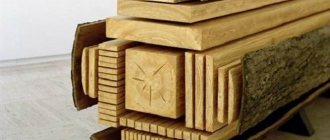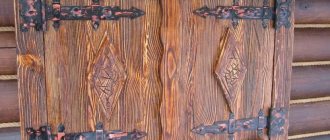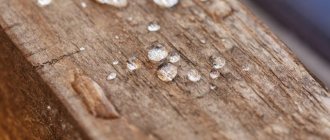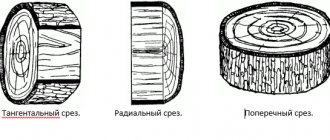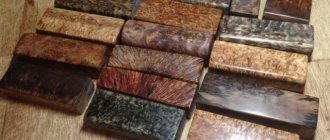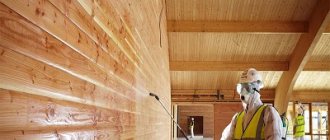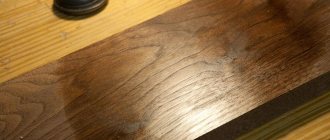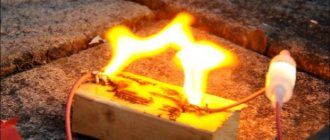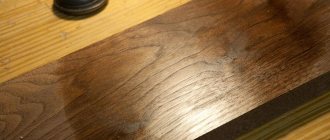If wooden trim or decorative elements have lost their original beauty, there is no need to rush to get rid of them. Below are available methods that will help bring wood into decent shape. Each of them has its pros and cons, it remains to choose the most suitable one.
In cases where there is no desire or opportunity to update, it makes sense to look at natural wood finishing materials in the catalog. Here you can order almost all types of wooden trim from pine, Angara pine, spruce, linden, aspen, and Siberian larch.
Do you want to first try to restore the lost beauty of aged wood? Read below how to do this.
Wood bleaching
The method allows you to renew the surface of old and very darkened wood, restoring its natural shade. For this purpose, wood bleaching agents are used. The main active ingredient is active oxygen (more gentle) or chlorine. In addition, the composition includes antiseptic additives that help eliminate mold and prevent its further occurrence. After applying the composition, the oxidation process begins, as a result, the lignin that holds the cellulose fibers together becomes discolored.
To bleach wood, you need to apply the composition with a synthetic brush, wait the time specified in the instructions, and then rinse with water. In outdoor conditions, you should wait for dry and warm weather. To consolidate the result, it is advisable to cover the bleached surface with a protective varnish or oil.
Disadvantages of bleaching with chlorine or oxygen-containing compounds:
- The use of bleaching compounds is not recommended in cases where the wood is severely damaged, since the action of aggressive substances can accelerate its destruction;
- requires time and effort - after bleaching, the wood must be washed with plenty of water.
Protect the root system
When carrying out excavation work, the hydrological regime of the site is disrupted: the groundwater level and the density of the coppice change, which can adversely affect the condition of the root system of trees. When leveling the soil, make sure that the root neck of the tree is not covered with soil. Excessive deepening will cause the roots to suffer from excess moisture and lack of oxygen. To prevent this, build a so-called “dry well”:
The depth of such a well should be at least 30-80 cm, diameter - 100-120 cm.
Wood sanding
Grinding is the mechanical removal of the top layer of the front surface to eliminate small cracks and chips, darkening, biodefects (the same mold). For deep lesions, the method may be ineffective.
The wood is renewed using a sanding machine. Experienced craftsmen recommend taking petal-type wheels with a grain size of 35 and a small diameter, up to 12.5 cm. After surface treatment, dust and small particles of wood remain, which can be easily removed with a clean rag or broom. The result is a clean and “fresh” surface, and it requires subsequent treatment with protective and antiseptic compounds.
We recommend: DIY sandbox
Disadvantages of sanding:
- the effect of the renewed surface does not last long, especially if it is not secured with a protective compound, as described above;
- sanding is important several times, since each time the wood becomes thinner and thinner;
- The process is long and labor-intensive, requiring time, patience and certain skills.
Determine the root growth zone
In order not to injure the root system of the tree, correctly calculate where the border of the growth zone of its roots lies (an area equal to the radius of the crown plus 1 m). In this place, excavation work must be carried out extremely carefully and in no case should you use heavy construction equipment. The area in which any excavation work is undesirable is indicated in red in the figure:
The boundary of this place is located from the trunk at a distance of two of its diameters (when measured at a level of 1.3 m from the ground). This calculation is correct for trees with a trunk diameter of at least 50 cm; in other cases, the retaining wall can be installed at a distance of at least 1 m from the trunk.
Wood restoration
We are talking about applying special restoration agents while preserving the visible structure of the tree. Modern restoration compositions not only return the wooden surface to a beautiful appearance, but also strengthen its top layer and create antiseptic protection. A wide range of colors allows you to choose the right shade for any tree.
The result of the restoration is impressive: two layers of high-quality composition do not just give “renewed” wood. They also create a durable, color-matched finish that strengthens aged wood and protects it from mold and mildew.
Disadvantages of using restoration compounds:
- the cost of restoration compounds cannot be called budgetary; updating a large-scale wooden surface will cost a decent amount;
- Before applying the composition, grinding and cleaning the surface from mold and mildew (if any) is required.
Make a site plan
Another specialist who cannot be avoided when planning the construction of a house (especially a house on a forest site) is an architect. He will develop the most optimal option, taking into account all the features of the area, and in the meantime you will draw up your action plan for the protection and preservation of trees, which includes the following actions:
- regular inspection;
- pest control;
- fertilizing and watering;
- sanitary pruning.
Trees will be subject to stress during construction, so make sure they receive the care they need.
Wood staining
Painting wood with paint, or enamel, or colored oil is the simplest and, perhaps, “ancient” way to renew any surface, including wood. The paint is applied with a roller or brush in even layers. Even a child can handle it.
Cons of simply painting wood:
- existing biological lesions remain in place, and it is better to remove them before applying paint;
- the texture and texture of the wood is completely hidden under the coloring composition;
- the coating will not be durable, it is unlikely to last longer than a couple of years, especially when used outdoors;
- requires the use of protective equipment.
The method of renewing wood should be chosen based on its appearance, the cost of processing compounds, as well as the willingness to spend time (for example, on sanding, etc.). With some effort, the tree will be transformed beyond recognition and will become “like new” - of course, if it has not rotted from the inside.
Trim the roots correctly
If excavation work is carried out in close proximity to a tree, the roots will have to be cut at the level of the excavation wall. This is done using a sharpened saw or pruning shears.
Treat root sections with a special wound treatment product (but do not use paint for this, as some sources recommend). Line the wall of the excavation with damp peat (at the level of the root cuts), wrap the roots in jute cloth and cover with a straw mat. Water periodically to keep the shelter moist.
Treatment of old trees
If you get a plot of land with old trees, don’t rush to follow the trend and plan the plot as if it were empty land. One of the most common mistakes novice gardeners make is thoughtlessly cutting down old trees. Of course, some trees will have to be removed if they are hopelessly diseased or if a site is needed to build a house. But most of the old-timers should remain in their places, because the general
determined primarily by the trees growing in it, their assortment and age. In addition, preserving a tree is easier and cheaper than planting fashionable large-sized species that are difficult to take root. In any case, it is better to start creating a new garden with landscaping
, inherited from you, and not from scratch.
It all starts with inspecting the trees. Let's do this with an example
. It takes 50–80 years for an oak tree to become a full-fledged adult tree, and the lifespan of an oak tree can reach 500 years. You simply cannot find a better keeper of the memory of the past.
First, look at the tree as a whole and assess the number of dead branches. If they immediately catch your eye, dominating some areas of the crown, and the green leaves on living branches do not have a rich color, this is a bad sign.
Presence on tree
wood mushrooms means the need for serious measures. But if there are no mushrooms, and if there are a large number of dry branches, the leaves
, then this tree has a future. All you have to do is remove the dry branches.
Check for holes in the trunk. If an oak trunk bifurcates at any distance from the ground, pay attention to
. Often in such places hollows and cracks appear, into which snow and rain penetrate, creating favorable conditions for the development of stem rot.
If a hollow is found at the bottom of the trunk, then using a probe from available means you need to check how far the process of decomposition of the wood has gone. An external sign of root rot may be a characteristic bottle-shaped thickening of the lower part of the oak trunk.
It happens that the process of decay has gone far and
inside the trunk it connects with some hollow higher up the trunk - such a tree requires treatment.
Treatment of hollows and wounds on the bark is necessary, because a diseased tree becomes fragile and may collapse. It is difficult to treat old hollows; they are usually affected by rot.
Now move away from the tree and evaluate the size of the crown, its density and the direction of the branches. The oak crown should
.
If the sky is difficult to see through the crown, the branches are chaotically intertwined in all directions, rubbing against each other - this is a sure sign of thickening. In this case it is necessary
, which will simultaneously lighten, rejuvenate and lighten the tree for safety reasons.
The lower part of the crown should not have branches growing at a slight angle to the horizontal, especially if there is a flaw on the trunk at the base of the branch. Don't let the small diameter of these branches fool you: due to the small angle, the weight distribution of the branch is unfavorable; as it grows and becomes heavier, it may break at the base. Such branches must be removed.
You can often see on old trees
, or even wide longitudinal faults. They arise due to temperature changes, the action of wind or the mechanical impact of the weight of a part of the tree. These areas lack the bark that protects the tree like human skin, and pathogens can enter the wood. Over time, cracks can become larger, increasing the likelihood of wood failure. Often
and proper crown relief gives a positive result.
Rejuvenate
not only is it possible
. Dig a trench half a meter deep around the circumference of the crown, fill it with compost or manure humus, and thickly “salt” it on top with stone flour. To complete the process, cover everything with the previously dug soil and water it generously. This method of applying fertilizer guarantees an even supply of nutrients to the roots, on which new root hairs will soon begin to grow, young shoots will appear in the crown, and the tree will begin to bear fruit again.
Under the crown of an old beautiful tree you can install
or
, it is better to cover the site with backfill so as not to damage the wood. Another option is to build directly under the tree
entwined with vines.
Pruning rules
Basic rules for rejuvenating a fruit tree:
- First of all, large branches are cut off;
- dry, diseased, broken shoots and those that look inside the crown are removed;
- up to 10 tops are left for the entire crop;
- the top of the trunk is removed to approximately 3.5 m to open the central part of the crown to sunlight;
- You can trim no more than 2/3 of the branches from the entire tree at a time, and postpone the repeated procedure until next year.
When pruning, it is necessary to remember that the lower branches are shortened to a branch looking up, and the upper shoots are shortened to the tops directed to the sides. This reduces the height of the crop and the diameter of its crown.
